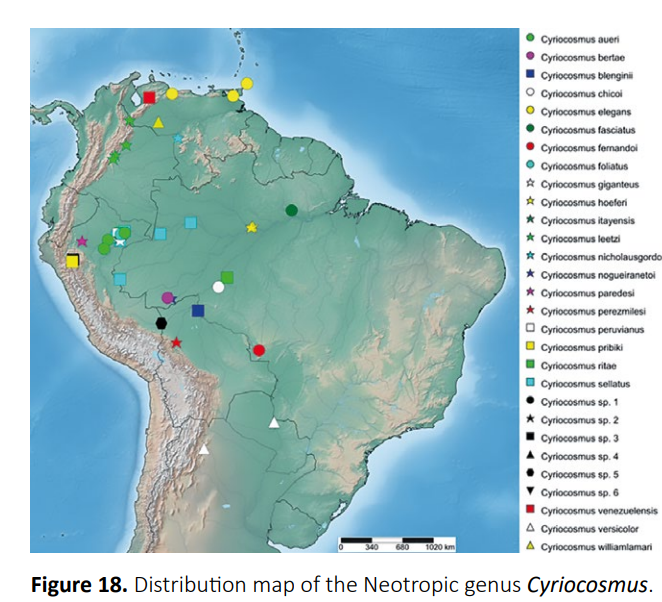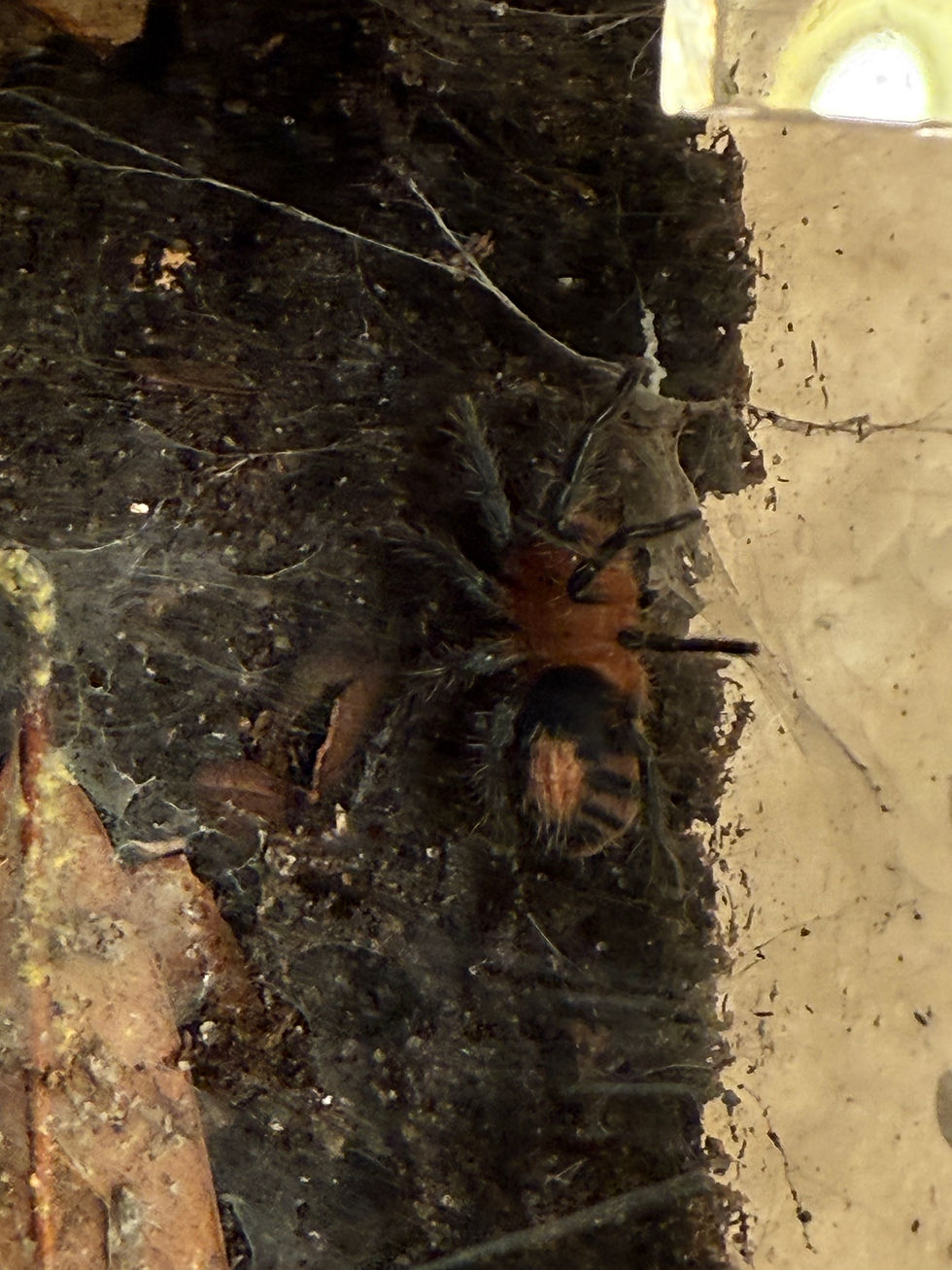Cyriocosmus
- Dominik Alexander
- Apr 17
- 2 min read
Updated: Jun 5
There are 23 accepted species of Cyriocosmus, which are found in South America, Trinidad and Tobogo. All species have type 3 urticating hairs. Four species are in synonymy. This genus comprises some of the smallest tarantula species.


Genus and species: Cyriocosmus ritae
Common name: Peruvian Black & White
Given name: Cortado
C. ritae can be found in the forests of Peru and Brazil. This is a dwarf species but fast-growing. They have beautiful black and white colorations with unique abdominal patterns. Considered fossorial but may climb as well.
Habitat: native to tropical rainforests with dense vegetation and humid environments. This is considered a fossorial species and will burrow under fallen logs, leaf litter, or crevices.
Husbandry Notes:
Enclosure: 4 in 360
Flora: Bio naturalistic
Sex: Undetermined
Life stage: Juvenile to sub-adult
Size: Approximately 1.25 inches
Growth: Molted recently
Disposition: Sling behavior and twitchy
Eating habits: Strong feeding response
Misc: Generally visible


Genus and species: Cyriocosmus perezmilesi
Common name: Bolivian Dwarf Beauty
Given name: Bean
C. perezmilesi is a fossorial dwarf species found in Bolivia. They have black heart-shaped patch in the middle of their abdomen. Their coloration is copper and black. They have an aggressive feeding response. Adults grow to approximately 2 inches, but tend to grow quickly to this length. The species name perezmilesi honors Dr. Fernando Pérez-Miles, a renowned Uruguayan arachnologist.
Habitat: native to tropical areas of Bolivia near the Beni River. They burrow but are commonly visible.
Husbandry Notes:
Enclosure: 4x3x2.5
Flora: Substrate
Sex: Undetermined
Life stage: Sling
Size: Approximately 0.5 inches
Growth: Steady growth, has not molted
Disposition: Sling behavior
Eating habits: Strong feeding response
Misc: Always visible and will take down larger prey




Comments